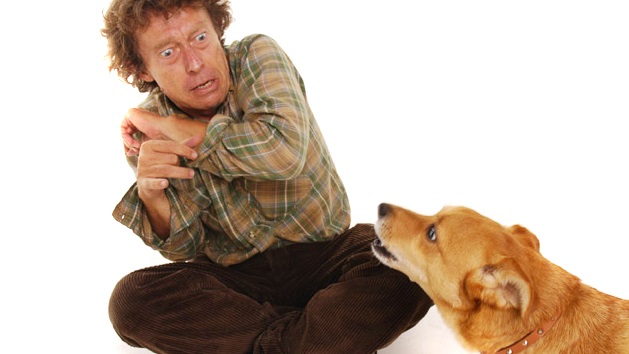Phobia may not always be associated with the harmful venomous creatures, but also with friendly beasts like dogs. Cynophobia is one of the most commonly found phobias in people, signified by irrelevant and extreme fear of dogs. In almost all cases, the subject is not visibly dangerous or possesses no risk in reality. A normal person would always be alert around a stray dog. But if your fear is over the extreme and you start avoiding a friend’s place or your own home to avoid a pet dog, you might be cynophobic.

How Common is Cynophobia?
Cynophobia is one of the most common phobias among those having fear of animals. Studies show that 36% of people seeking treatment of animal phobia have cynophobia. Though fear of snakes (Ophidiophobia) and spiders (Arachnophobia) are more prevailing than cynophobia, this phobia is more influential as dogs are popular household pets. It can occur with anyone regardless of age , sex or any other personal attribute.
What causes Cynophobia?
Some causes known to develop cynophobia in people are
A traumatic event involving dogs
One of the major causes for cynophobia is associated with any traumatic event involving dogs. That can be a serious attack from a dog, a growling dog on road or a dog bite. Any such event can trigger the fear to magnify and cause cynophobia in people.
Also, a mere witnessing of other people getting harmed by dogs can also trigger the phobia. This is like learnt behavior where the person learns that dogs might be dangerous, and develops intense fear as a response.
Genetic Factors
Genetic factors have also been associated with causing cynophobia. A person can be more vulnerable to cynophobia if he/she had any family history of cynophobia. The fear can be inherited through generations, through family genes.
What are the Symptoms of Cynophobia?
Common symptoms occurring with anyone suffering from cynophobia are:
- Intense and constant fear of encountering a dog ( even a thought or a picture can trigger the anxiety); almost in all cases, the fear being irresistible and unreasonable
- Getting fixed or frozen at a sight of dog
- Screaming or crying at a sight of dog
- Complete avoidance of places that may be of relatives or friends, schools and workplace where dogs can be found
- Realizing that the fear is excessive and unreasonable (except in children)
- Panic attacks accompanied by physical symptoms such as trembling, sweating and clammy hands, trouble in breathing, chest pain, dry mouth, nausea and vomiting, unreasonable fear of dying and numbness around limbs
How is Cynophobia treated?
A combination of different therapies and medications may be used in the treatment process of cynophobia depending on its severity.
System Desensitization and relaxation
This therapy is focused in lowering the level of fear of dogs. The therapist and the person share different regular sessions where he/she is exposed in front of a toy dog or a real dog, or just pictures. The therapist learns how the person shows the fear and analyzes the exact reason. Depending on the case nature, the therapist also teaches different relaxation ways such as breathing control and visualizing technique. The person needs to use the relaxation technique simultaneously with the exposure to the fearful subject. Eventually, this leads to desensitizing or making the fear numb or weak. The major purpose of this therapy is to strengthen the tolerance and weaken the fear. In severe cases, Hypnosis can also be used as a relaxation way for the person.
Cognitive Behavioral Therapy (CBT)
Cognitive Behavioral therapy is totally focused on learning the negative thoughts and beliefs associated with the fear of dogs. The therapist develops unique ways to deal with these thoughts, and modify the false beliefs into positive thoughts. Generally, the fear may not be directly linked with dogs as dangerous animals but to some other incident or factor related with dogs. CBT helps to recognize the roots of the fear, and bring a positive change accordingly.
Medications
In severe cases, medications such as anti-anxiety and anti-depressant medicines can be used to control the fear and distress. The medicines may not be used for a long time. However, if the case is really serious, then the medicines can be prolonged.